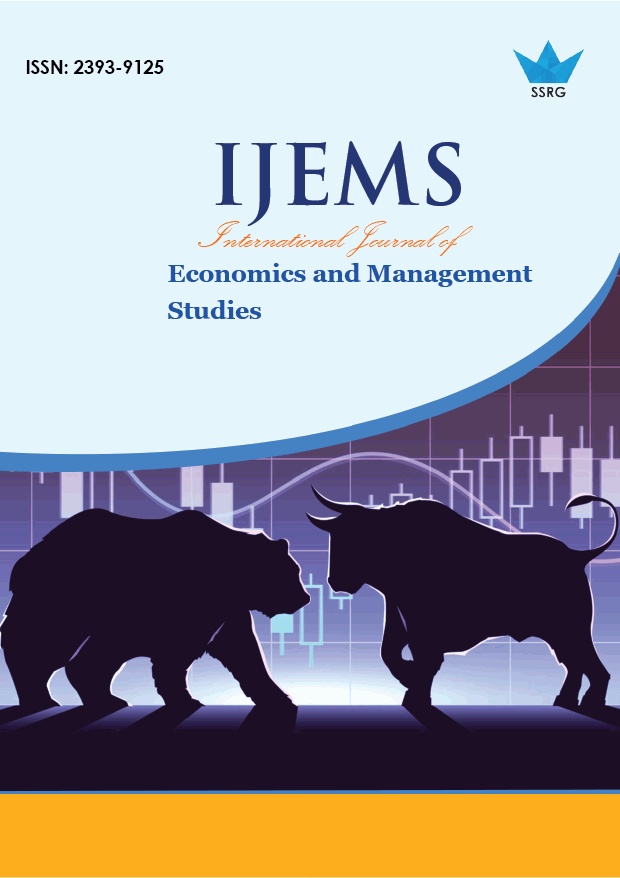Cross-Cultural Management Strategies of Chinese Enterprises in Vietnam Under the Belt and Road Initiative

| International Journal of Economics and Management Studies |
| © 2023 by SSRG - IJEMS Journal |
| Volume 10 Issue 5 |
| Year of Publication : 2023 |
| Authors : Trieu Thi My An |
How to Cite?
Trieu Thi My An, "Cross-Cultural Management Strategies of Chinese Enterprises in Vietnam Under the Belt and Road Initiative," SSRG International Journal of Economics and Management Studies, vol. 10, no. 5, pp. 19-25, 2023. Crossref, https://doi.org/10.14445/23939125/IJEMS-V10I5P103
Abstract:
The COVID-19 pandemic has been disruptive, thus occasioning policy changes across various continuums. Fortunately, given that the pandemic is now under considerable control, a change to the work-from-home policy is necessary. As such, all employees will be required to return to normal office work. Middle-level managers will be responsible for ensuring that employees understand the essence of the new policy to facilitate effective compliance. Compliance with the new policy is mandatory, and noncompliant employees will be subject to termination. In essence, this communication comprehensively highlights the policy change and the expectations for different stakeholder groups.
Keywords:
The Belt and Road Initiative, Management Strategies, Chinese Enterprises in Vietnam.
References:
[1] Asian Conference on International Business Cooperation, Atlantis Press, pp. 353-355, 2018.
[2] Ali Cheshmehzangi, Linjun Xie, and May Tan-Mullins, “Pioneering a Green Belt and Road Initiative (BRI) alignment between China and other Members: Mapping BRI's Sustainability Plan,” Blue-Green Systems, vol. 3, no. 1, pp. 49-61, 2021.
[CrossRef] [Google Scholar] [Publisher Link]
[3] Johanna Coenen et al., “Environmental Governance of China's Belt and Road Initiative,” Environmental Policy and Governance, vol. 31, no. 1, pp. 3-17, 2020.
[CrossRef] [Google Scholar] [Publisher Link]
[4] Sunyoto, “Improvement of Internationalization of Smes through Cultural Awareness (Theoretical and Empirical Studies),” SSRG International Journal of Economics and Management Studies, vol. 8, no. 5, pp. 45-48, 2021.
[CrossRef] [Publisher Link]
[5] Enterprises under “The Belt and Road “Initiative. In 3rd International Symposium on.
[6] European Bank for Reconstruction and Development [EBRD], Belt and Road Initiative (BRI), 2020. [Online]. Available: https://www.ebrd.com/what-we-do/belt-and road/overview.html#:~:text=The%20BRI%20is%20an%20increasingly,MoU)%20with%20China%20is%20138
[7] Xue Gong, “The Belt & Road Initiative and China’s Influence in Southeast Asia,” The Pacific Review, vol. 32, no. 4, pp. 635-665, 2019.
[CrossRef] [Google Scholar] [Publisher Link]
[8] Mehmet Ali Koçakoğlu, Mehmet Reşit Sevinç, and Mehmet Cançelik, “China’s Capital Export Within the through of Belt and Road Initiative: A Model Application for Turkey,” SSRG International Journal of Economics and Management Studies, vol. 7, no. 2, pp. 12-17, 2020.
[CrossRef] [Google Scholar] [Publisher Link]
[9] Chiung-Chiu Huang, and Nguyen Cong Tung, “Dancing Between Beijing and Taipei: Vietnam in the Shadow of the Belt and Road Initiative,” The China Review, vol. 22, no. 2, pp. 315-339, 2022.
[Google Scholar] [Publisher Link]
[10] Yanmei Li, and Xiushan Bai, “How Can China and the Belt and Road Initiative Countries Work Together Responding to Climate Change: A Perspective on Carbon Emissions and Economic Spillover Effects,” International Journal of Environmental Research and Public Health, vol. 19, no. 15, pp. 9553, 2022.
[CrossRef] [Google Scholar] [Publisher Link]
[11] Peng Lu, and Zhaohui Yu, “An Analysis of Cross-Cultural Communication Problems and Countermeasures in the Belt and Road Initiative,” Journal of Sinology, vol. 15, no. 1, 2021.
[Google Scholar] [Publisher Link]
[12] Arshia Mukhtar et al., “Challenges Confronting the ‘One Belt One Road’ initiative: Social Networks and Cross-Cultural adjustment in CPEC projects,” International Business Review, vol. 31, no. 1, 2022.
[CrossRef] [Google Scholar] [Publisher Link]
[13] Syed Sabreena Bukhari, “China’s Belt and Road Initiative in South Asia: Implications on India,” SSRG International Journal of Humanities and Social Science, vol. 7, no. 6, pp. 47-53, 2020.
[CrossRef] [Publisher Link]
[14] Nguyen, Long Duc Bao et al., “The Belt and Road Initiative (BRI): Opportunities and Risks from Vietnamese Perspective,” The Journal of Asian Finance, Economics and Business, vol. 9, no. 4, pp. 229-238, 2022.
[CrossRef] [Google Scholar] [Publisher Link]
[15] Vera Schulhof, Detlef van Vuuren, and Julian Kirchherr, “The Belt and Road Initiative (BRI): What will it Look like in the Future?,” Technological Forecasting and Social Change, vol. 175, 2022.
[CrossRef] [Google Scholar] [Publisher Link]
[16] Van-Hoa Vu, Jenn-Jaw Soong, and Khac-Nghia Nguyen, “Vietnam’s Perceptions and Strategies toward China’s Belt and Road Initiative Expansion: Hedging with Resisting,” The Chinese Economy, vol. 54, no. 1, pp. 56-68, 2020.
[CrossRef] [Google Scholar] [Publisher Link]
[17] Heng Wang, “The Belt and Road Initiative Agreements: Characteristics, Rationale, and Challenges,” World Trade Review, vol. 20, no. 3, pp. 282-305, 2021.
[CrossRef] [Google Scholar] [Publisher Link]
[18] Minna Wu, and Chongyou Ruan, “Study on the Cross-Cultural Management of Chinese Enterprises under “The Belt and Road“ Initiative,” 3rd International Symposium on Asian B&R Conference on International Business Cooperation, 2018.
[CrossRef] [Google Scholar] [Publisher Link]
[19] Chen Xiaoyu, “Cross-Cultural Communication in the Belt and Road Strategy,” The Frontiers of Society, Science and Technology, vol. 3, no. 8, 2021.
[CrossRef] [Google Scholar] [Publisher Link]

 10.14445/23939125/IJEMS-V10I5P103
10.14445/23939125/IJEMS-V10I5P103